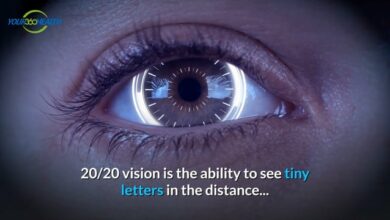Straight Eyes Without Surgery – Help for the ‘Cross-Eyed’ Child
By Dr. David Cook
Have you ever seen someone with one eye that was turned in toward his nose or drifted out toward his ear? If so, you were undoubtedly aware that their eyes did not look normal. But did you ever wonder about how well that person sees?
“Crossed-eyes” is a vision problem in which an eye slips in toward the nose. “Wall-eyes” is a similar condition in which an eye drifts outward toward the ear. Eye doctors use the word Strabismus to label these conditions. The child or adult with Strabismus has one eye that drifts in, out, up, or down. Such individuals also see differently.
When a person with normal vision accurately aims their eyes at an object, both eyes combine in their mind to create a single image. It is known as Stereopsis. However, If one eye aims at an object and the other eye turns to the side, the two sets of information will not correctly combine in the person’s mind, and double vision will occur.
While the child with Strabismus may at first see double, in time, the mind will learn to ignore the extra image by “shutting off” all the information coming in through the turned eye. This “shutting off” of one eye, also known as suppression, occurs at the expense of depth perception. Typically, when both eyes function together, each eye has a slightly different view of the same object. When these two different views blend in their mind, the individual perceives a three-dimensional picture. With one eye “shut off,” however, the superiority of two-eyed depth perception is lost.
To experience this loss of depth perception for yourself, cover one eye and look at two objects, one of which is closer than the other. Next, uncover your eye and see how much more “air” appears to separate the two objects and how much more “depth.”
Since depth perception is dependent on both eyes working together, the more the child “shuts off” a crossed eye, the worse the depth perception will likely become. Tasks that require the eyes to guide the body, such as walking down the stairs, riding a bicycle, learning to hit a ball, or driving a car, may pose particular problems.
Surgery is available to align the eyes cosmetically. However, that by itself does not eliminate suppression or establish fusion and Stereopsis. Vision Therapy involves specialized instruments and guided activities that can “teach” an individual with Strabismus to regain lost visual abilities by learning how to use the eyes together while also improving the cosmetic eye alignment.
For more information or to receive a free copy of Dr. Cook’s book explaining these vision challenges, please call Cook Vision Therapy Center, 770-419-0400, or visit CookVisionTherapy.com.




